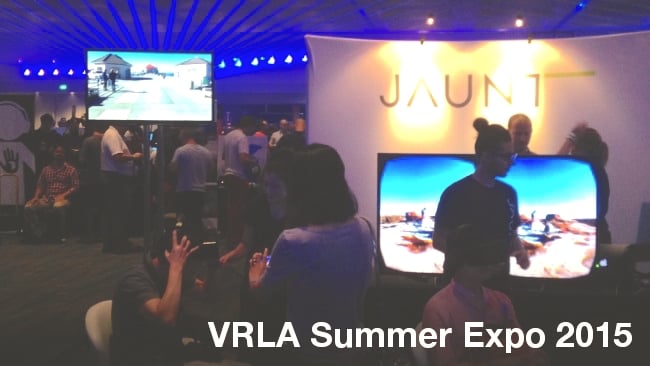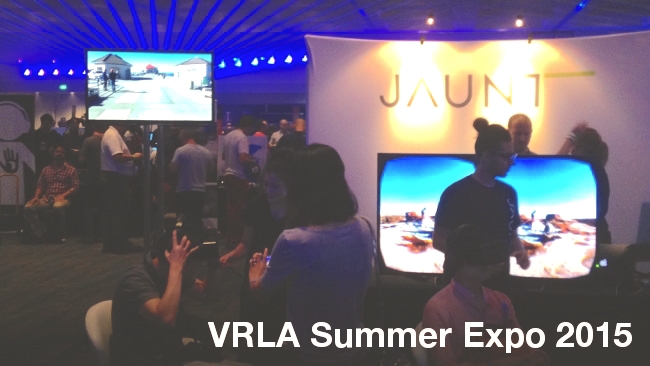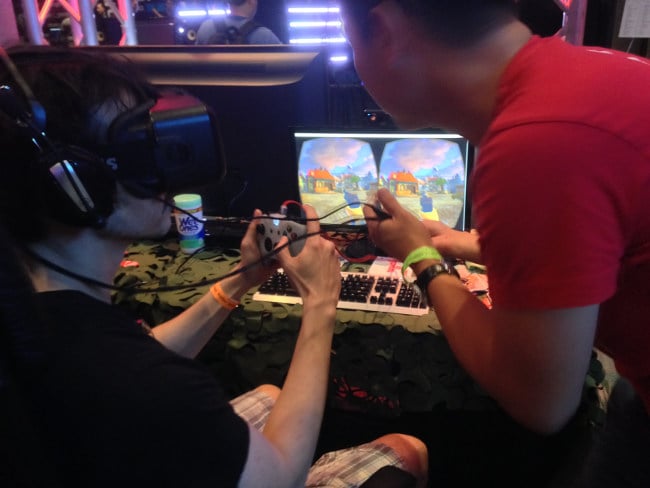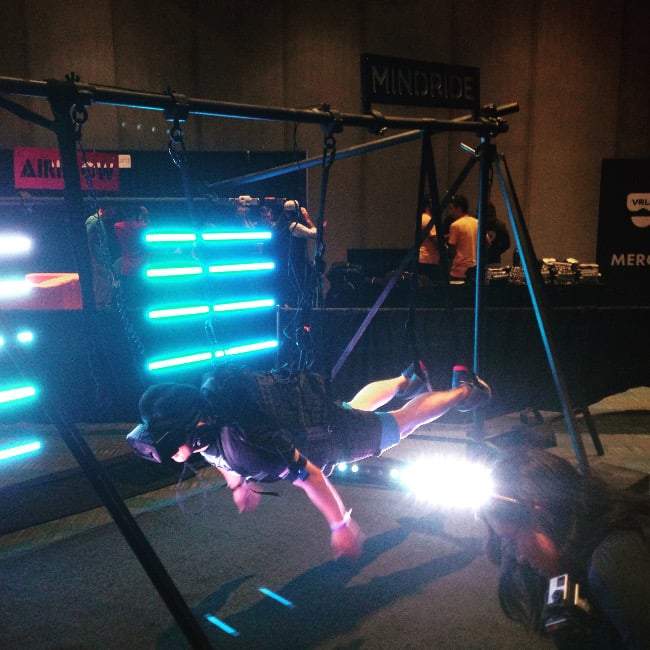
 VRLA Summer Expo 2015
VRLA Summer Expo 2015
A trip to the VRLA's Summer expo left our USA Editor blinking a lot and full of thoughts about the current state of virtual reality and where it's going.
On the scale of tech conventions, VRLA Summer Expo 2015 was definitely on the smaller end. The event did sell out, but its 1500 person estimated attendance pales in comparison to what you'd see at a typical NAB Show, which routinely reaches six-figures. Of course, it's unfair to compare the biggest tech show for video and broadcast professionals to a fledgling regional expo. Also, given that we're in the nascent stages for commercial VR, the turnout of insiders and enthusiasts did fill the hall with activity and lines for the most popular exhibits.
Noticeable by their absence
Some of the major players in the VR space, including Oculus, HTC and upstart Starbreeze, which boasts the development headset with the largest field of view and highest resolution, the StarVR, didn't exhibit at VRLA 2015. Oculus has a 'Connect' event in Los Angeles at the end of September. As the most recognizable name in VR, it probably makes more sense to have an event that it can completely control without mixing its message with that of competitors at a small, regional event. HTC just premiered the Vive headset at VRLA Spring Expo 2015, so its absence here is understandable. It would have been nice to have seen Starbreeze's headset, as the buzz from those that have demoed its Walking Dead experience has been very positive. Given the StarVR's specs and its adoration from critics, it could have been the hit of the show. But, as a small company, Starbreeze isn't in a position to demo everywhere. Even with those omissions from the exhibitor line-up, there was still more than enough to experience at VRLA.
Live action 360 VR needs a little extra
Upon entering LA Convention Center's Concourse Hall, I was greeted by two competing exhibits, one from Jaunt VR, the Palo Alto and Los Angeles-based company that specializes in cinematic VR workflow tools and is even making its own dedicated VR camera, and another from Samsung, showing off its Gear VR system (which uses a newer Samsung smartphone for display, sensing and processing). I demoed Juant's The North Face: Climb on an Oculus Rift (presumably DK2) and Mountain Dew VR Snow on the Samsung Gear VR.
Mountain Dew VR Snow Making of Featurette
The North Face: Climb User Recording
When it comes to immersion, I often look for examples where the experience could elicit some response beyond what watching video or playing a game on a 2D screen can offer. In that sense, the Jaunt and Samsung demos left me a little cold. Now, I don't want this to sound like a knock against the VR productions themselves, as they are both high-quality examples of live action VR in 2015. Yet, it seems a confluence of issues keeps the experiences from reaching a certain threshold for immersion.
First off, the resolution of both the Oculus Rift DK2 and the Samsung Gear VR (presumably paired with the Galaxy S6 phone) still convey fairly pixelated images for virtual reality. The Gear VR has the better resolution, while the Oculus Rift DK2 has the wider field of view, but while demoing live action 360 VR in both systems, I felt somewhat separated from what was happening. In the future, higher resolution headsets will likely mitigate this problem. However, more pixels won't satisfy the overwhelming urge to interact with what's happening in a way other than head turns.
The need for greater interactivity
This lack of interactivity for live action 360 VR is a problem that could impact the very development of 'cinematic' VR. Although multi-camera VR arrays already exist and, as I mentioned, Jaunt is working on its own dedicated VR camera, the NEO, while Nokia surprised us with new of its own VR camera, the Ozo, I wonder if we'll eventually move to outside-in greenscreen studio set-ups, so we can capture performances and place them in navigable VR worlds. While this may stretch the idea of cinematic VR, multiple 'viewings' could yield very different experiences simply based on the user's ability to move its perceived position in the VR space, creating an extremely flexible storytelling model. But even if we don't go in that direction (at least, in the early-going), there are other ways to make the experiences feel fuller.
One of the other Jaunt demos featured a live Paul McCartney concert. I asked someone who had just experienced the McCartney demo what he thought. He told me that the immersion was cool in the beginning, but once you get a look at everyone around you, your attention goes back to the stage and stays there. I wonder how much better that experience could have been if he could at least change view to a different VR camera array covering the event (pit, mezzanine, stage, etc.). I'm sure the folks at Jaunt and other companies are asking themselves these same questions as they plan future products and productions.
Control is King
It's been suggested that VR is technology that will cause cinema and games to converge. Only time will tell how much the line between the two is blurred or whether it's whisked away completely, but looking back on the VRLA Summer Expo, my favorite experiences were all game demos. AMD and Reload Studios showed off World War Toons's playable demo.
World War Toons E3 Trailer
The controls were fairly simplistic, just go forward, jump and shoot spread out over the buttons of an Xbox controller, but I wanted to play that demo over and over again.

Likewise, Nvidia had a racing game playable demo with even less options, just accelerate and the analog button for twisting around a tubular 'track', but I had to pry myself away to give other people a chance to play. Now, I'm not as into video games as I was when I was a kid, but those two game demos stuck in my mind, much more so than the live action VR demos.
The most popular exhibits were the VRcade, a large, fenced off space with cameras around the perimeter to track a user's movements as he-or-she played one of various games, and AirFlow, a VR self-flight simulator with harnesses and fans to complete the effect, with flying control executed by body movements (lean this way, fly this way).

These are the types of VR experiences that you're likely to see at amusement parks and larger fairs in the near future, but they both highlight premium experiences that use more exotic control schemes. Aside from the need for lots of physical space and complicated rigging equipment, manufacturers are looking for new ways for users to input commands to consumer devices.
The ability and methods to control your VR experience will likely be more important than resolution and field of view. Whether we're talking about advanced eye tracking for selection events, motion controllers (such as the Oculus Touch controllers), outside-in depth sensing body positioning trackers, inside-out near field depth trackers (like Leap Motion's technology), innovative and intuitive control schemes will only enrich the VR experience and, looking forward, could help determine which headsets take off and which ones flounder in 2016.
Tags: VR & AR


Comments